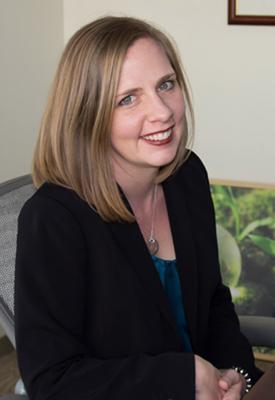Meet EPA Scientist Sherri Hunt, Ph.D.

Dr. Sherri Hunt is a senior scientist in the Office of Research and Development’s (ORD) new Office of Science Advisor, Policy, and Engagement and the new coordinator for the Science and Technology Policy Council. She continues to publish articles in peer-reviewed journals and recently was a co-editor for a book on Multiphase Chemistry in the Atmosphere. After working for several years as the Air and Energy Matrix Interface in EPA Science To Achieve Results grant program, Sherri spent a year on an interagency detail as a Program Director and returned to EPA just before the ORD reorganization. While working in the STAR program, Sherri was a project officer on over 60 grants, led writing teams for over dozen solicitations, and coordinated the Air, Climate, and Energy Centers for the A&E program.
How does your science matter?
I am currently working on supporting the member's efforts to improve effectiveness of the Science and Technology Policy Council (STPC). I hope to bring new ideas and energy to the group. However, since I just started this a couple of weeks ago, I have a lot to learn.
My science matters because the STPC serves as the mechanism for addressing the significant science and technology policy issues that go beyond regional and program boundaries. It promotes guidance and policy that facilitates sound science use across the Agency. This is a big challenge because a complex web of priorities and interests exist. I want to do what I can to help untangle things and assist the group.
Previously I led the team managing the outside research piece of A&E by working across EPA to identify research that is of interest and necessity to regions, partners, and the public. I also interact with scientists, both in and outside EPA, to stay knowledgeable about the latest advances and pressing research questions. This job involved synthesis and translation of research results, rather than doing experiments on my own. Within the Air and Energy Program, I helped identify the most important research questions out there and help support work that is finding the answers.
If you could have dinner with any scientist, past or present, who would you choose and what would you ask them?
This is a hard question for me to answer because there are so many scientists out there whom I want to sit down and talk with! In my job, I meet and interact with such a wide variety of scientists, each with their own expertise, so I couldn’t possibly single one out. I haven’t met a scientist that didn’t have something interesting to say.
What do you like most about your research?
When I worked in the grants program, the scientific results we’re trying to generate broadly impact people by strengthening the basis for sound policies and providing the knowledge needed to develop effective plans that will ultimately improve public health. A significant part of my work involves listening to experts, translating science across different groups, and making connections. I really like learning from people across EPA and the broader research community.
Tell us about your background.
I received my bachelor’s degree in chemistry from the University of Georgia where I was encouraged by fabulous mentors to continue with my scientific education. I then went to the University of Minnesota for my doctorate in physical chemistry. My thesis involved determining the bond distances and angles of small acid-base complexes in the gas phase.
While in the lab, I read an atmospheric chemistry book by Dr. Barbara Finlayson-Pitts who we invited to give a talk on campus. I was super impressed, so I contacted her and was thrilled to be able to do postdoctoral research in her group at the University of California, Irvine. While there I conducted aerosol chamber studies to understand the chemistry of sodium bromide particles, which are a component of sea salt particles. The reactions that occur within and on the surface of these particles impact air quality in places like Los Angeles. This work enabled me to learn about atmospheric chemistry, air quality, and air quality modeling.
When did you first know you wanted to be scientist?
When I started college, I was a double major in math and music. I discovered that those areas didn’t really fit me as well as I thought, and I was more interested in how things interacted in the body, which is why I considered pharmacy for a bit. However, it was the chemistry part of pharmacy that I loved, as well as asking scientific questions and figuring out why and how things work. Fortunately, I had great mentors to interact with along the way who helped me pave my future educational and career paths.
If you were not a scientist, what would you be doing?
I would like to have a small booth at a Farmer’s Market selling fresh vegetables from my garden or my abstract paintings, which recently have become a creative addiction.
Any advice for students considering a career in science?
The mentors you have along the way are important, and you should seek them out at multiple levels. You need senior mentors as well as those that are only a year or two ahead of you. Each person's expertise is slightly different, which will truly impact your future decisions in your field of interest. Also, try different things and always have an open mind!
Editor's Note: The opinions expressed herein are those of the researcher alone. EPA does not endorse the opinions or positions expressed.
